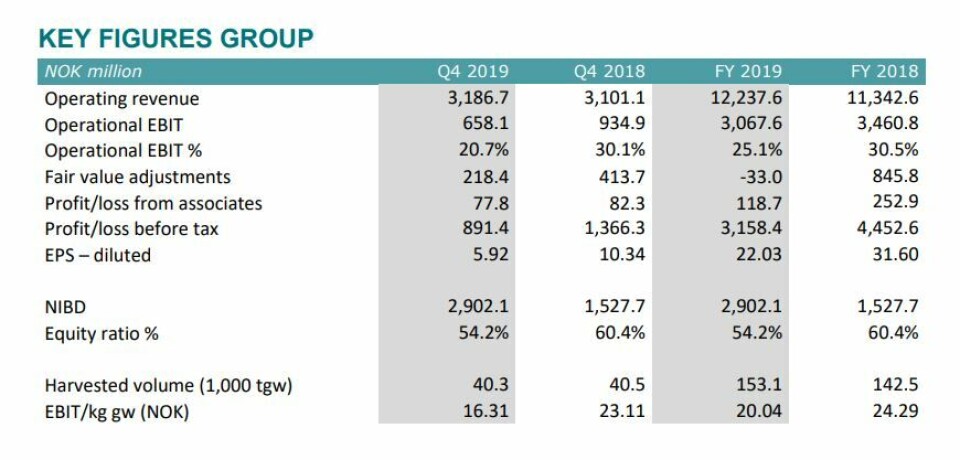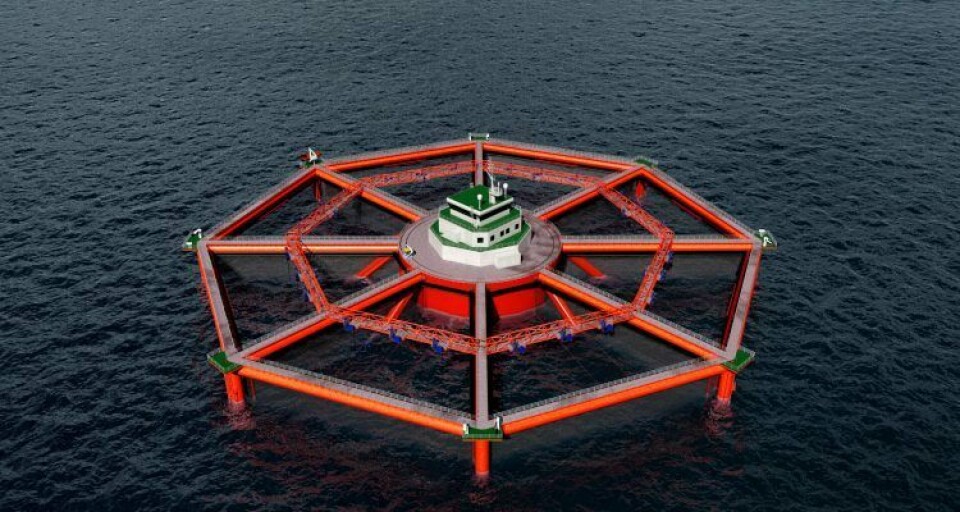
Wrong prices at wrong time as SalMar Q4 profit falls
Low spot prices during a period of high-volume harvesting has been given as the main reason for disappointing results from Norwegian salmon farmer SalMar in the fourth quarter of 2019.
The company, which owns a 50% share of Scottish Sea Farms, saw operating profit drop from NOK 934.9 million (£76.9m) in Q4 2018 to NOK 658.1m in the same period last year.
“The fourth quarter was weaker than expected for the SalMar Group,” said chief executive Gustav Witzøe in a press release accompanying SalMar’s Q4 report.
“This is largely attributable to the Fish Farming Central Norway segment harvesting a large volume of salmon at the start of the quarter when the spot price was at its lowest point. At the same time, it is satisfying to see that our Fish Farming Northern Norway segment posted substantially better results after several weak quarters.”

Early harvesting
In SalMar’s Central Norway segment fish transferred to sea in the autumn of 2018 were harvested earlier than planned at the start of the fourth quarter 2019 to reduce the biological risk posed by salmon lice. This had a negative impact on average fish weight and costs and resulted in weak price achievement in a quarter when salmon prices rose by 46% from October to December.
SalMar’s Icelandic subsidiary, Arnarlax, has a positive Q4 with good biological performance and better capacity utilisation at its harvest plant.
For the full year, Arnarlax increased harvest volume by 46% and turned from a loss maker into a profitable operation. EBIT per kilo was NOK 10.21 compared with NOK -11.82 in 2018.
Winter storms
Arnarlax expects a higher harvested volume and higher costs in the first quarter 2020 due to the harvesting out of the 2018-generation following increased mortality caused by winter storms at the start of the year.
As reported by Scottish Sea Farms co-owner Lerøy yesterday, SSF had a weaker Q4 because of fish health issues in Q3 and contributed less to its owners.
SalMar has maintained harvest guidance of 152,000 tonnes of salmon in Norway - 103,000 tonnes in Central Norway and 49,000 tonnes in Northern Norway - and has increased harvest expectations from 10,000 to 12,000 tonnes on Iceland. Scottish Sea Farms is expected to harvest 26,000 tonnes in 2020, similar to 2019.

Smart Fish Farm
The Q4 report said development of SalMar’s second offshore salmon farm, Smart Fish Farm, “continues apace”.
“The facility is even more technologically advanced than the Ocean Farm 1 concept, and has been specially designed to withstand substantially more exposed locations,” said SalMar.
“Smart Fish Farm has twice the capacity of Ocean Farm and the company has, in this connection, been granted eight development licences of 780 tonnes MAB each.”
Ocean Farm 1, SalMar’s first offshore concept, was stocked with a second cohort of salmon last autumn.
“So far the biological performance has been very good, with strong growth and low lice numbers. These fish are expected to become harvestable in the autumn of 2020,” said SalMar.























































